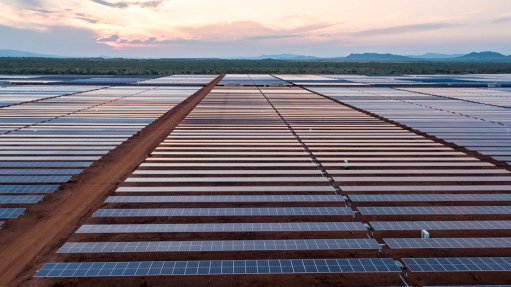
Generating 1 GW of solar power capacity through photovoltaics requires 685 000 oz of silver.
Executives from Canadian and international silver miners operating in the country have appealed to the Canadian government to recognise silver as a critical mineral.
In a letter addressed to Energy and Natural Resources Minister Jonathan Wilkinson, the executives outlined the reasoning behind their push for silver to be included on the list.
For a mineral to be considered for the critical minerals list, it must be essential to Canada’s economic or national security, be required for the national transition to a sustainable low-carbon and digital economy and contribute to Canada’s being a sustainable and strategic source of critical minerals for its international allies.
In addition, critical minerals must satisfy both the following criteria: the mineral’s supply is threatened, and the mineral has a reasonable likelihood of being produced in Canada.
“While we believe that an effective argument can be made that silver meets all of the first three criteria, the most striking argument for silver as a critical mineral falls under the scope of the second criteria and its requirement as an input to the clean energy transition,” the letter states.
Last year, global silver demand was estimated to be 1.17-billion ounces, of which half was for industrial use. The fastest-growing industrial use of silver is photovoltaics (PV), which demanded 161.1-million ounces in 2023, 14% of the global silver demand.
On average, generating 1 GW of solar power capacity through PV requires 685 000 oz of silver. The growing adoption of extensive solar power facilities is significantly boosting the demand for silver, a trend that is expected to persist as countries strive to fulfil their renewable energy commitments.
Silver is also a common component of nuclear reactors and a fundamental element in various electrical applications, including electric vehicles.
Addressing supply – which the industry understands is the main reason why silver has been excluded as a critical mineral in the past – the letter stresses that there is a “sizeable misconception” of the above-ground availability of silver in the marketplace.
“Researchers from around the globe have raised the alarm that silver is a potential bottleneck in the transition to a low-carbon economy due to supply limitations, disruptions to supply chains, competition for other uses and increased demand. The academic consensus is that silver merits attention as a critical mineral. Unfortunately, the reputation of silver as a readily available, budget-friendly precious metal has led to misconceptions that have to date blocked policy alignment with this academic consensus.”
Using statistics to illustrate their argument, the executives state that there was a 237.7- million-ounce silver deficit in 2022, believed to be the biggest shortfall on record. The combined 2021 and 2022 deficits more than offset the cumulative surpluses of the previous 11 years.
Canada is the world’s thirteenth-biggest silver producer and is the US’s second-biggest source of silver imports. However, silver production has declined over the past decade, with the companies attributing the decrease to a declining ore grade.
To replenish reserves of viable mined resources, additional exploration is needed to identify new orebodies.
The 20 signatories include, among others, First Majestic Silver CEO Keith Neuymeyer, The Silver Institute president and CEO Michael DiRienzo and Coeur Mining CEO Mitchell Krebs.